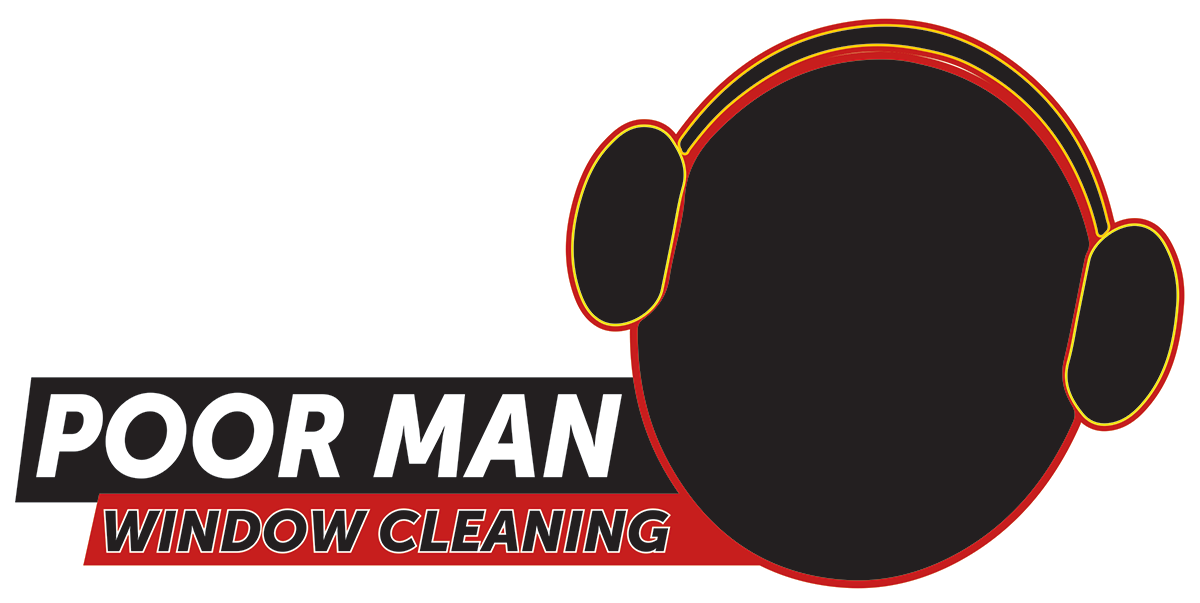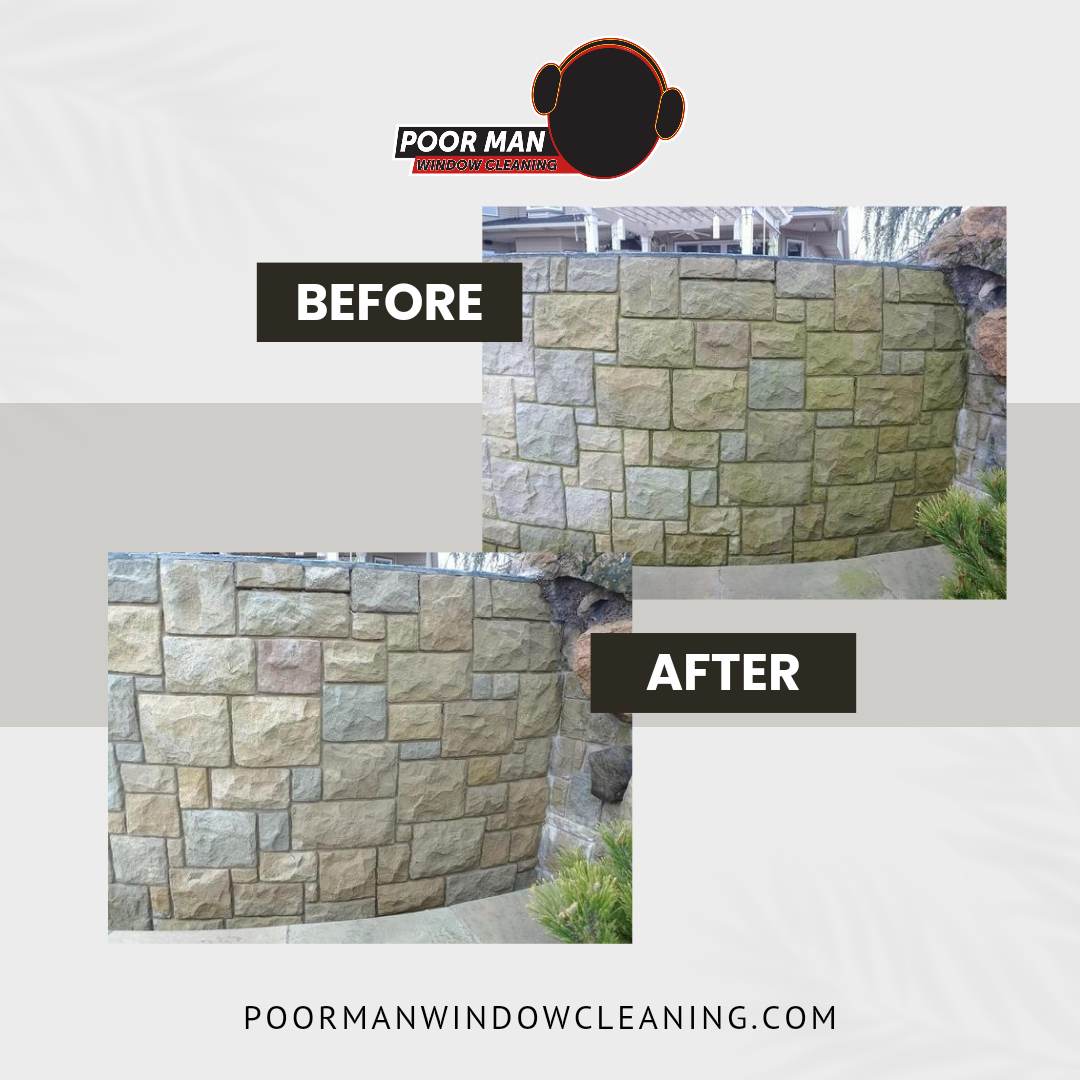
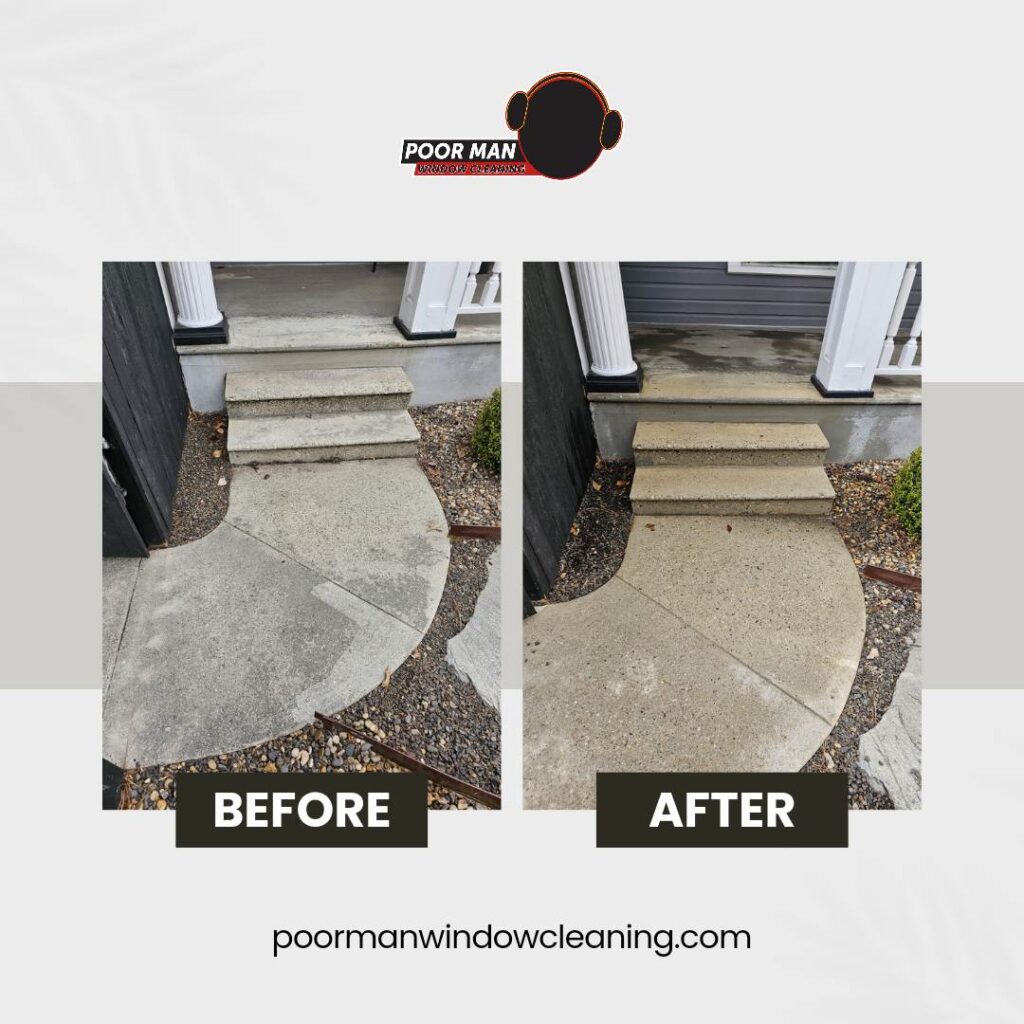
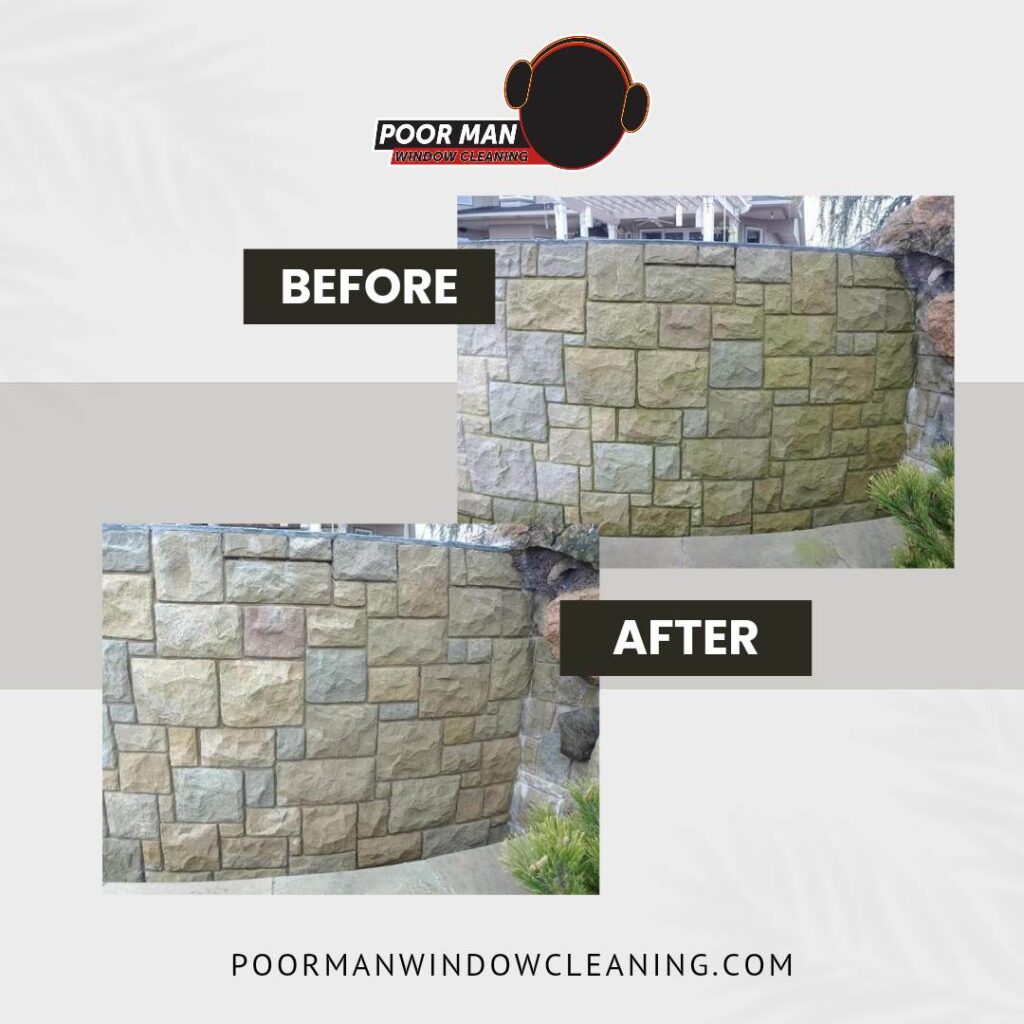
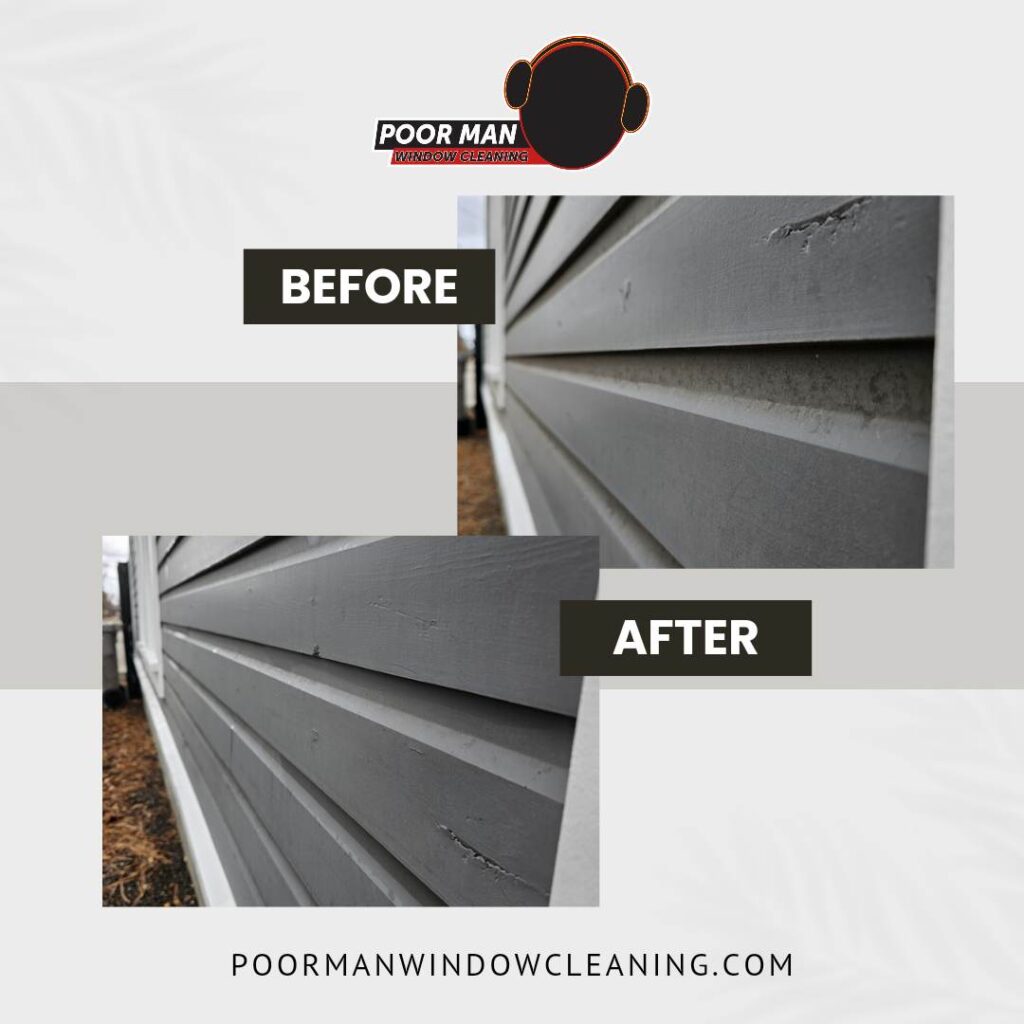
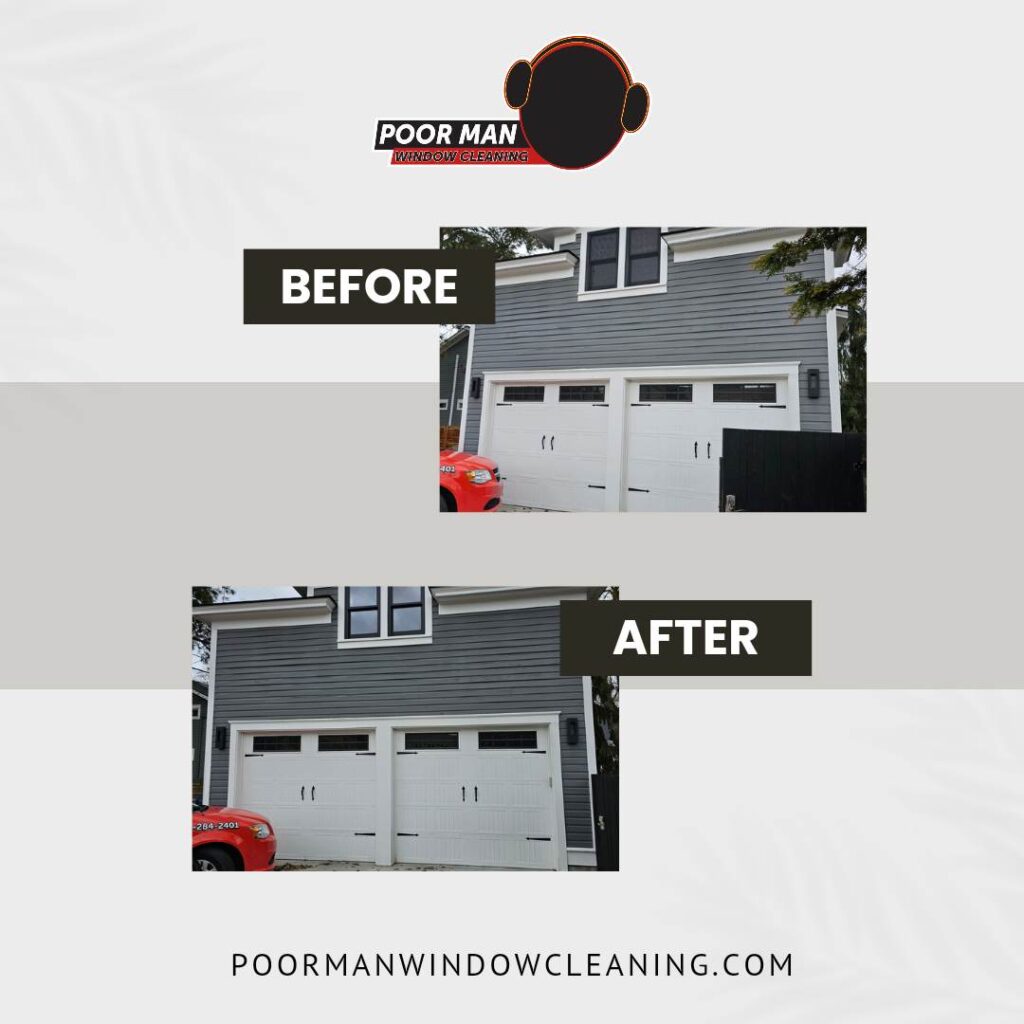
A guide to help you decide!
Soft Wash vs Pressure Cleaning: The Pros and Cons of Both Techniques
When it comes to cleaning exterior surfaces, there are two primary methods: soft washing and pressure cleaning. Both techniques have their advantages and disadvantages, and the best method for any particular job depends on a variety of factors, including the type of surface being cleaned, the degree of dirt and grime buildup, and the environmental conditions in the area. In this article, we will explore the differences between soft washing and pressure cleaning, the benefits and negatives of each, and where both techniques are best to the protection and maintenance of your investment.
Soft Wash vs Pressure Cleaning: The Basics
Soft washing is a technique that uses low-pressure water, along with specialized cleaning solutions, to gently remove dirt, grime, organic growth, and other environmental contaminants from exterior surfaces. This technique is particularly effective for cleaning delicate surfaces, such as stucco, wood, vinyl, and painted surfaces, which can be damaged by high-pressure cleaning.
Pressure cleaning, on the other hand, uses high-pressure water to blast away dirt and grime from surfaces. This technique is particularly effective for cleaning tougher surfaces, such as concrete, brick, and stone, which can withstand the force of high-pressure water without sustaining damage.
The Benefits and Negatives of Soft Washing
One of the primary benefits of soft washing is its gentleness. Because this technique uses low-pressure water and specialized cleaning solutions, it is less likely to damage delicate surfaces. Additionally, the cleaning solutions used in soft washing are specifically designed to break down and remove organic growth, such as algae, mold, and mildew, as well as remediate oxidation on several surfaces that pressure would damage.
Now, let’s talk about how a high desert environment that can lead to oxidation. In a high desert environment, such as ours in Southern Idaho, the hot summer sun can cause the bleaching of of many surfaces, oxidizing them. You can often pressure wash an oxidized structure and once it dries, it still looks dusty and hazy. You can wipe the surface and get a chalky residue; this is the oxidation and needs special scrubbing agents to help remove and rejuvenate the substrate, including stucco, painted surfaces, metal siding, vinyl, and composite materials such as Trex Decking.
A soft wash can help the substrate by removing the dirt and debris that can accumulate on the surface and promote oxidation. The cleaning solution used in a soft wash also contains surfactants that help to break down and remove any existing oxidation on the surface.
Another benefit of soft washing is that it can be more effective at removing organic growth than pressure cleaning. This is because the cleaning solutions used in soft washing can penetrate deep into the pores of the surface, effectively killing the spores of organic growth and preventing regrowth.
However, there are also some negatives associated with soft washing. For one, it can be a more time-consuming process than pressure cleaning, as the cleaning solutions need time to work and must be thoroughly rinsed away afterward. Additionally, soft washing may not be effective at removing tough stains or built-up dirt and grime.
In summary, removing organic growth and oxidation requires different cleaning techniques.
The Benefits and Negatives of Pressure Cleaning
One of the primary benefits of pressure cleaning is its effectiveness at removing tough stains and built-up dirt and grime. Because this technique uses high-pressure water, it can blast away even the toughest contaminants from surfaces, leaving them looking like new.
Another benefit of pressure cleaning is its speed. Because this technique is so effective, it can often be completed in less time than soft washing. Additionally, pressure cleaning is a great way to prepare surfaces for painting or sealing, as it can remove old paint, sealant, and other coatings.
However, there are also some negatives associated with pressure cleaning. For one, it can be damaging to delicate surfaces, such as wood, stucco, and painted surfaces. Additionally, pressure cleaning is not effective at removing organic growth, as the high-pressure water cannot penetrate deep enough into the pores of the surface to kill the spores of organic growth.
The Difference Between Oxidation and Organic Growth
Before we delve further into the differences between soft washing and pressure cleaning, it is important to understand the difference between oxidation and organic growth. Oxidation is a natural process that occurs when a surface is exposed to the elements, such as sun, wind, and rain. Over time, this exposure can cause the surface to become discolored, faded, or even rusted.
Organic growth, on the other hand, is caused by living organisms, such as algae, mold, and mildew, that grow on surfaces in damp, shady areas. Organic growth can cause surfaces to become slippery, unsightly, and even dangerous if left unchecked.
The Difference in Removing Organic Growth vs. Oxidation
Sure, I’d be happy to explain the difference between removing organic growth and oxidation from surfaces through soft washing and pressure cleaning.
Organic growth refers to living organisms such as algae, moss, lichen, and mold that can grow on surfaces like roofs, walls, and sidewalks. These organisms thrive in damp, shaded areas and can cause discoloration, staining, and damage to surfaces over time.
On the other hand, oxidation refers to a chemical reaction that occurs with our direct sunlight and summer heats, leaving your home or structure looking dusty, chalky, and dull. This can happen on surfaces made of metal, engineered surfaces like Trex decking, painted surfaces, vinyl siding, and stucco.
To remove organic growth, the first step is to assess the type of organism and the extent of the growth. This will determine the best approach to cleaning. In general, soft washing is the preferred method for removing organic growth as it uses low-pressure water mixed with a cleaning solution to gently remove the growth without causing damage to the surface. The cleaning solution typically contains a mixture of surfactants and sodium hypochlorite diluted to 1-3% that helps to kill and remove the organic growth.
The process of soft washing for organic growth removal involves applying the cleaning solution to the surface and allowing it to sit for a period of time. This allows the solution to penetrate the growth and loosen it from the surface. Then, the surface is gently rinsed with low-pressure water to remove the growth and the cleaning solution. This method is effective for removing organic growth from surfaces and helps to prevent regrowth for a longer period of time.
To remove oxidation, the process involves using specialized environmentally conscious scrubbing agents applied evenly and allowed to dwell for the time needed, it may also require physical scrubbing. The surface will then be thoroughly rinsed, and repeated if necessary.
Protect yourself and your investment
Failure to properly clean organic growths can lead to insurance hazards such as slips and falls, as well as potential damage to your property’s structure. Mold, algae, and mildew can also cause health hazards, especially for those with respiratory problems. Regular soft washing can help protect your property from the damaging effects of organic growths, oxidation, enhance its curb appeal, and increase its value. We recommend scheduling soft washing services at least once a year to keep your property looking its best and to prevent potential insurance hazards.
We highly recommend discussing what type of battle the Nefarious Grime is waging with you and how best to battle it, with your Friendly Neighborhood Grime Fighters at Poor Man Window Cleaning. With years of industry experience, continued training and industry education, we have the tools to help you!. You just might be surprised how regular soft washing can prevent the buildup of oxidation, dirt, and debris, keeping the surface looking and feeling fresh for longer.
